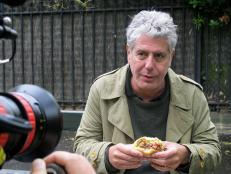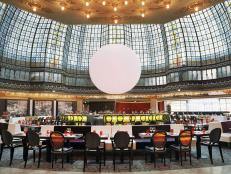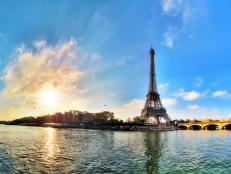Paris Neighborhood Guide for First-Time Visitors
Paris is one of the most pedestrian-friendly cities in the world. Travel with us as we take you on a tour to explore the hidden gems in each of the 20 arrondissements that make up the magnificent City of Light.

By:
Kwin Mosby
Related To:
lessRelated To:
5 / 20
5th Arrondissement: Pantheon
In the 5th arrondissement, Rue Mouffetard is one of the oldest streets in the Latin Quarter. The famous Sorbonne University, the Pantheon and the Jardin des Plantes are also located here. History buffs may want to stop by the National Medieval Art Museum (Musee de Cluny) and the Roman-era coliseum, Arenes de Lutece.
1st Arrondissement: Louvre
The 1st arrondissement in Paris includes several notable tourist attractions. See the Mona Lisa and Venus de Milo at the world-renowned Louvre; visit the La Comedie-Francaise, where French playwright Moliere (aka Jean-Baptiste Poquelin) performed; go shopping at the Forum des Halles; explore the Conciergerie, where Queen Marie Antoinette was imprisoned; or just spend a relaxing day at the perfectly manicured Jardin des Tuileries.
2nd Arrondissement: Bourse
The historic headquarters of the Bourse de Paris (Paris Stock Exchange) and a branch of the National Library of France are located in the 2nd arrondissement, but the real star is Rue Montorgueil, one of the best open-market streets in the city. We suggest a stop by Galerie Vivienne (pictured), an indoor passage built in 1823 that features several shops, cafes and restaurants.
3rd Arrondissement: Temple
The Marais neighborhood, also located in part of the 4th arrondissement, is a popular spot for hipsters and the LGBT community. Walk down Rue Dupetit-Thouars to see a small square called Place Nathalie Lemel, which was named after a French feminist who fought during the Commune de Paris in 1871. Looking for other things to do? Visit the Picasso Museum, the French National Archives and the Carnavalet Museum, which is dedicated to Paris’ history.
4th Arrondissement: Hôtel de Ville
Wake up in the morning with a view of Ile de la Cité from Ponts des Arts. In the Hôtel de Ville neighborhood, tourists can stroll through the streets of the Marais; check out modern art at the Centre Pompidou; take a tour of Notre Dame, the setting for Victor Hugo’s The Hunchback of Notre Dame; and see the author’s home -- located near Place des Vosges -- where he wrote Les Miserables.
6th Arrondissement: Luxembourg
Welcome to the Saint-Germain-des-Prés neighborhood, which was named after the first president of the Paris Parliament in 1352. You can’t leave this arrondissement without visiting the Luxembourg Museum and Gardens, as well as Le Procope, the oldest cafe in Paris. In addition, this area has several other cafes that are noted as regular spots for famous artists and writers. For example, Les Deux Magots was a regular hangout for Pablo Picasso and Ernest Hemingway.
7th Arrondissement: Palais-Bourbon
In 1674, Louis XIV opened Hôtel des Invalides (pictured) as a shelter to his soldiers. This neighborhood is also home to the Eiffel Tower, the tomb of French military and political leader Napoleon Bonaparte, and the Musee d’Orsay, which showcases artwork by famous artists such as Vincent Van Gogh, Edgar Degas, Pierre-Auguste Renoir and Claude Monet.
8th Arrondissement: Élysée
Located in the center of Place Charles de Gaulle, the Arc de Triomphe is a must-see attraction if you’re visiting this neighborhood. The Champs-Elysees is lined with numerous cafes, upscale restaurants and high-end stores. Don’t hesitant to take a break from shopping to sit in the nearby gardens (Jardins des Champs-Elysees) or watch cars zip around Place de la Concorde.
9th Arrondissement: Opéra
The centerpiece for the 9th arrondissement is the Palais Garnier, home of the Paris Opera. It was built by Charles Garnier from 1861 to 1875 and served as the inspiration for Gaston Leroux’s gothic love story, The Phantom of the Opera. If opera isn’t your thing, then visit the Olympia theater and concert hall, where French songstress Edith Piaf and other singers had historic performances. Visit the Musee Grevin (a wax museum); shop at Printemps department store; stroll through the Grand Boulevards neighborhood; or experience the Fragonard Musee du Parfum (a perfume museum).
10th Arrondissement: Entrepôt
Two of the city’s main railway stations are located here: Gare de l’Est and Gare du Nord. Don’t be scared off because this arrondissement is primarily a working-class area that attracts young professionals and artists. It’s actually a great place to grab a cup of coffee or a glass of wine to relax. In addition to having several cafes and restaurants, the Canal Saint-Martin neighborhood is a great place to have a picnic along the Seine; take a tour of the canal by boat; or rent a bike and explore this part of the city a different way. For music buffs, we suggest a visit to the famous Parisian jazz club New Morning to soothe your soul.
11th Arrondissement: Popincourt
Visit the 11th arrondissement, specifically the Oberkampf neighborhood, if you want to kick up your heels and dance into the wee hours of the morning. This area is known for its vibrant nightlife scene and its hip bars and clubs, such as Le Balajo. Place de la Bastille, which is shared with the 4th and 12th arrondissements, and the Edith Piaf Museum are a couple of other popular tourist attractions here.
12th Arrondissement: Reuilly
Port de l'Arsenal, a boat basin in Paris, was built where the former Bastille jail was once located. It’s also where Canal Saint-Martin and the Seine River connect. The Opera Bastille and the Bois de Vincennes are among the popular spots here. One of the city’s best restaurants, Le Train Bleu, is located in Gare de Lyon, a busy train station. After a nice meal, travelers can burn off a few calories on the Promenade Plantee, a 3-mile, tree-lined walkway built on the site of an old railway. This green space is what inspired New York City to build the High Line in Manhattan.
13th Arrondissement: Gobelins
A main square, between Rue de Tolbiac and Avenue d'Ivry, is one of several places in Chinatown used to host annual Chinese New Year celebrations in Paris. The huge residential area is also home to a branch of the National Library of France. Take a fun stroll along the cobblestone streets of the Butte aux Cailles’ art-deco architecture. It’s a quaint neighborhood and definitely one of the city’s hidden gems.
14th Arrondissement: Observatoire
When visiting the 14th arrondissement, we suggest a stop along Villa Seurat, a private street with studios built in the 1920s and ’30s for artists such as sculptor Chana Orloff. American writer Henry Miller lived here while writing Tropic of Cancer. Walk around the City University campus or, if you’re feeling adventurous, take a tour of Paris’ mysterious underground catacombs, which are accessible from the Place Denfert-Rochereau.
15th Arrondissement: Vaugirard
Enjoy a brisk walk on Ile aux Cygnes, which is located near Quartier Beaugrenelle and the Eiffel Tower. Paris’ largest arrondissement (in both size and population) is also home to the Louis Pasteur Museum, Andre Citroen Park, Aquaboulevard (Europe’s largest water park) and Montparnasse Tower, arguably the best place to get amazing panoramic views of the city.
16th Arrondissement: Passy
The 16th arrondissement is home to several popular museums: Palais de Chaillot, which features architectural, naval and ethnographic museums; the Guimet Museum, which is known for its collection of Asian art; the Marmottan Monet Museum, which has the world’s largest collection of Claude Monet’s works; and the Palais de Tokyo, an edgy modern-art museum. For kids, we suggest a trip to the Jardin d’Acclimatation, an amusement park and garden.
17th Arrondissement: Batignolles-Monceau
Rue des Batignolles is a street lined with stylish cafes and pricey boutiques. Looking for more to do in this area? Spend some quality time with someone special in the romantic Square des Batignolles; marvel at the crazy intersection at Place de Clichy and compare it to NYC’s Times Square; or enjoy a picnic at Parc Monceau, where there are a couple of playgrounds to keep the kids busy.
18th Arrondissement: Butte-Montmartre
In Montmartre, the Sacré Coeur Basilica offers wonderful views of the city. Check out a burlesque show at Moulin Rouge; experience Pigalle, the city’s racy red-light district; explore the Dali Museum, which is dedicated primarily to the sculptures and drawings of Salvador Dali; and get your portrait drawn by a local artist in the Place du Tertre.
19th Arrondissement: Buttes-Chaumont
Built between 1813 and 1821, Canal de l'Ourcq goes from Paris to Mareuil-sur-Ourcq, a distance of about 55 miles. In addition to the canal, this arrondissement is home to 2 of the city’s most interesting parks: Parc des Buttes-Chaumont and Parc de la Villette.
20th Arrondissement: Ménilmontant
This arrondissement is great for the contemplative tourist. Head to Parc de Belleville for a quiet respite to enjoy great views of Paris, or visit the Pere-Lachaise Cemetery to see where the Doors frontman Jim Morrison was buried. Music fans familiar with French singer Edith Piaf can also stop by the memorial dedicated to the eccentric songstress, who’s known for her famous tune La Vie en Rose.





